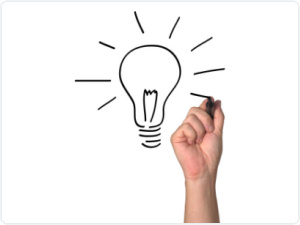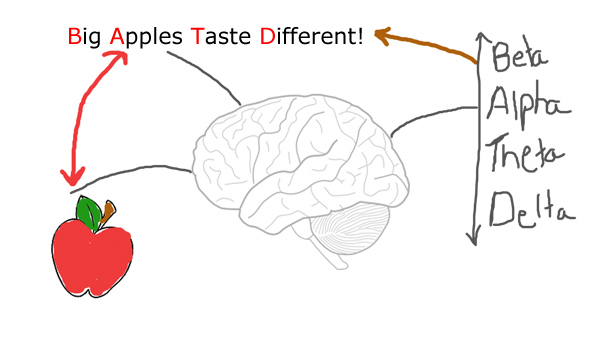
How Using A Mnemonic Device Can Help You With Information Retention
What is the the best way to memorize information?
 Before we dive into the main thesis of this article, we should get a general understanding of how our brain performs the task of recalling material. From there, I’ll gear this article towards the memorization of information collected through reading. This approach can also be applied to any other forms of information sources.
Before we dive into the main thesis of this article, we should get a general understanding of how our brain performs the task of recalling material. From there, I’ll gear this article towards the memorization of information collected through reading. This approach can also be applied to any other forms of information sources.
How We Memorize Information
The brain is a complex organ and the centre of the nervous system. It’s primary purpose is to control the actions of the human body. Somewhere in it’s complex workings and subsystems, you will find the process for memory. How the brain performs the task of memory is a vast subject but for simplicity reasons, I will cover only the relevant. Our brain uses visualization and patterns as a model to aid in memorizing information. For example, lets read the following sentence:
“I have a great idea.”
Immediately after reading the sentence, the brain creates a visual image of it’s representation. To me the image represents a light bulb such as the image below:

This visual image then imprints itself in our brain and gets stored as data that can later be referenced in the form of memory. Visual imagery is the first part to help us memorize better. The second part is through something known as a mnemonic device. A mnemonic device is a specific cue you can use to remember complex concepts or ideas.
For example, if you want to remember the proper four cardinal direction sequence of North, East, South and West, you can remember the mnemonic device phrase of “Never Eat Slimy Worms.” The first letter in each word of the phrase represents the first letter of each word in the proper four cardinal direction sequence. Mnemonic devices can also be visual, kinesthetic or auditory. For this exercise we will use mnemonic device sentences to help us memorize better.
The Best Way To Memorize Information
A useful way to memorize information is to combine an image with a mnemonic device. Below is an example of a mnemonic device that I created to memorize the brainwave categories. This image helps me memorize the information easily because it shows the mnemonic device and the relation between each element. Note how I use images, keywords and a mnemonic device.

The brainwave categories are placed in order of frequency level. Beta being the highest and Delta being the lowest. The mnemonic device of “Big Apples Taste Different” helps me remember the proper sequence of brainwave levels. This is a very simple example. If you wish to memorize even more complex material, you need to scale the exercise and add more images, keywords and more mnemonic devices.
This exercise does not have to be fancy. It just has to be relevant enough for you to comprehend. It will help you memorize better because it captures the images your brain creates when information is read. Adding the mnemonic device element helps you memorize the information even better because it is rhythmic in nature. So the next time you need to memorize information, try drawing an image, place your keywords, and create a mnemonic device. You will surely come up with some very creative ideas that will help you remember more.
More Resources:
Joseph Rodrigues
Joseph is an Iris instructor based out of Toronto. He loves to share his personal knowledge as an entrepreneur, and credits a lot of his success to speed reading techniques and productivity strategies.



Comments
jack berde
how to memorize poems and sentences quickly?
Joseph
Hey Jack, have you tried mnemonic devices for this? Would you like me to create a post that is more specific for memorizing sentantes using mnemonic devices?
Luke
Hi Joseph,
Great article. Have you ever tried studying with spaced repetition programs like Anki or Supermemo? I’m a big fan.
Those programs really pointed out to me how little we actually remember. I’m never sure how much time to spend reading new material vs. trying memorize things I want to remember. Once I started paying attention to it I was shocked how little I remembered after reading a new book.
Joseph
Hey Luke,
Thanks for your feedback, I have never heard of those programs but I have taken a note of them to research and try out. I love coming across programs like these, thanks for sharing.
Luke
Joseph,
Thanks for the reply–let us know what you think. I have become rather obsessed with Anki but….I am also a bit skeptical. It’s easy to spend quite a bit of time memorizing facts that may or many not be important to you in the future as opposed to reading new books.
Taking the large volume of classes at a university and tests like they usually make you do seems completely absurd to me now.
Melvin
I used to do this a lot when I was in college since we all know studying is all about memorizing stuffs (especially exams). It works but not all the time at least for me.
Now that I’m done with school, I’m looking on how I can implement it in my own work and business since it doesn’t really require much memorization.
Theresa Torres
Hi Joseph,
I appreciate your sharing these tips on the best way to memorize. I’ve noticed that my memory is not what it used to be and nowadays I rely more on online tools to save important information. But there are instances when I’m offline and I need to rely on my memory alone so it helps to have some method of doing this.
Thanks for sharing. Have a nice day!
Joseph
Hey Theresa,
Thanks for your Feedback. Yes memory tends to be affected by age but we have great tools and free games like the one on Lumosity to help combat the effects of age and memory. Have you used Lumosity before?
Theresa Torres
Hello again Joseph! Yes, I actually did try Lumosity. It was fun! I think I did fairly well on my scores but I noticed I need more practice on problem solving.
I haven’t played for a while so thanks for reminding me. Have a nice day!
Joseph
I got the paid membership so I could get all the games and compare my BPI. great stuff, Glad I could remind you :)